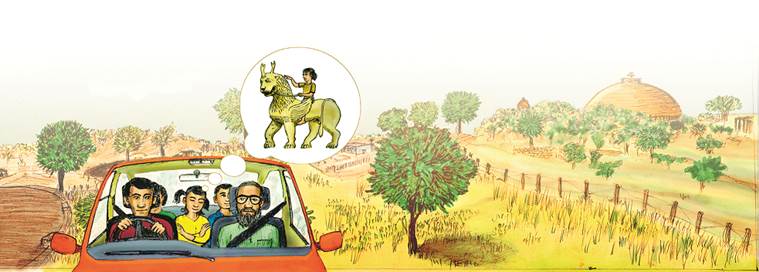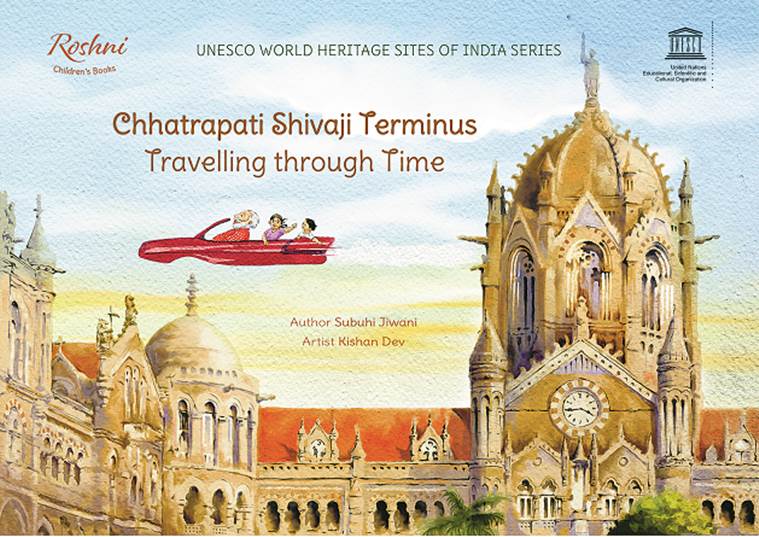Written by Surbhi Gupta |Updated: November 28, 2018 3:52:04 pm
Day out with history
Experts pen stories based on their expeditions with children to UNESCO World Heritage Sites across India

“In schools, children are taught to identify monuments with their patrons, but they are never treated as scientific/engineering marvels, or as works of art,” says historian Narayani Gupta
On An early winter morning in 2017, a bunch of children from Agra geared up to travel to the Keoladeo Bird Sanctuary in Bharatpur. The morning mist was unexpected, and accompanying them were zoologist Kranti Yardi and wildlife conservationist and surgeon Erach Bharucha. The group followed the trail recommended in Salim Ali’s The Book of Indian Birds, that also introduced the children to the nooks and crannies of the sanctuary, how birds live, and their food pyramid. The birds they managed to identify included pied mynas, Egyptian vultures, a grey hornbill, purple swamphen and crested serpent eagle, among others. The educational trip also resulted in a storybook titled Keoladeo Bird Sanctuary — The Kingdom of Birds, authored by Bhaucha and illustrated by Maya Ramaswamy. The 30-page publication is part of a book series that acquaints young-lings with UNESCO World Heritage Sites in India.
There is little focus on Indian architectural history in India. In schools, children are taught to identify monuments with their patrons, but they are never treated as scientific/engineering marvels, or as works of art. Ninety eight per cent of Indians who know anything about our monuments have learned it at school or through television visuals. Family groups going as tourists are fed the same information,” says historian Narayani Gupta, who has initiated and edited the series.

Published by Mapin Publishing, the other books in the series tell stories of Mumbai’s Chhatrapati Shivaji Terminus, Mahabalipuram in Tamil Nadu, Madhya Pradesh’s Sanchi Stupa and the Qutb Minar in Delhi (each priced Rs 195). “There are 37 World Heritage Sites in India. We chose one from each region — north, south, west, central and east. We will also cover the remaining 32, which should not take too much time because we now have a sense of how long it takes,” says Gupta.
Each book has been authored by an expert. If Gupta and illustrator Shashi Shetye visited the Qutb Minar on a cold Christmas morning, writer Nanditha Krishna led a group to the shore temples of Mahabalipuram. Subuhi Jiwani shares the history of the iconic Chhatrapati Shivaji Terminus through her protagonists Laali and Mithu in the book Chhatrapati Shivaji Terminus — Travelling Through Time, and Delhi-based writer-filmmaker Sohail Hashmi recalls his expedition to the Sanchi Stupa in Bhopal, where children spotted monkeys, two-humped camels, tigers with wings, lions with horns and sheep with human faces. This is illustrated by Pervez Rajan in the book Sanchi Stupa — Where Tigers Fly and Lions Have Horns . “The publisher, Bipin Shah, suggested that visuals play a major role. He wanted authors and artists to work together, and not use photographs,” says Gupta.

The fact that the experts were accompanied by children (aged 8 to 13 years) during their visits, Gupta says, helped improvise the narratives. “They are most eager to think things out for themselves. We wanted the children to imagine and react. We asked writers not to give lectures but answer the questions posed by children. We wanted them to commend good questions, and not be patronising,” she says, adding that the books also are intended to encourage repeat visits to the historical sites. She plans to publish another book series that involves teenagers. “Those will have more scientific and aesthetic content. It will simplify architectural history for those entering college and make the subject more interesting,” adds Gupta. Meanwhile, the current series has already been translated into Urdu, Hindi and Tamil. Gupta hopes that publishers in other languages will also come on board.






















No hay comentarios:
Publicar un comentario